
三月诞生石:完整指南 + 备选宝石
对于迎接春季到来的三月宝宝来说,他们有两种官方诞生石。海蓝宝石和血石是三月的两种诞生石,它们外观迥异,但同样蕴含着丰富的传说。
三月以罗马战神马尔斯 (Mars) 命名,因为罗马士兵在冬季战争结束后,会在三月恢复作战。严格来说,三月(或Martius )是罗马历法中的第一个月份,之后为了更好地与阴历年份保持一致,一月和二月被添加进来。
除了回归战争,古人也回归了农耕和游牧,春分在3月20日(南半球为秋分)。许多节日也随之而来,大多庆祝火星或新年。
如今,三月象征着新的开始、重生和对未来的希望。此外,三月还是庆祝平等的妇女历史月,三月八日是国际妇女节。
确定了三月的含义后,我们将深入探讨三月的两种诞生石—— 血石和海蓝宝石的含义、历史和特性。
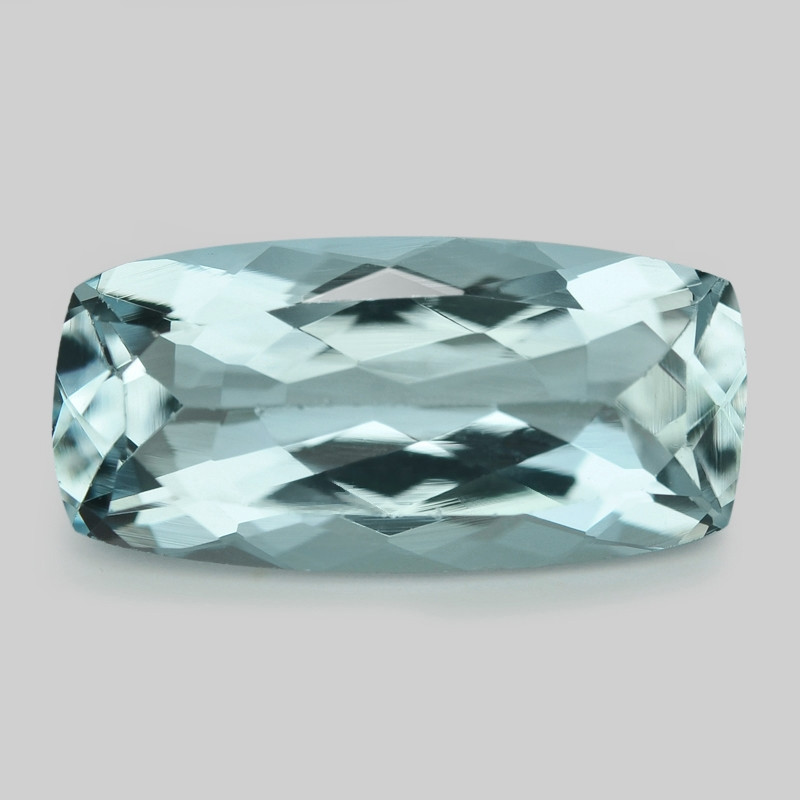
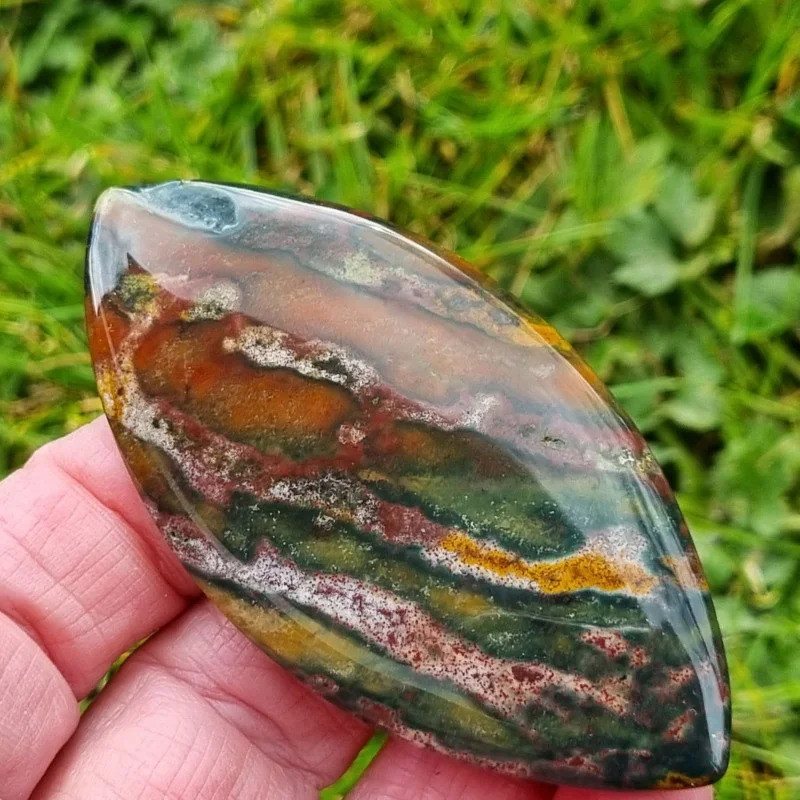 上图:刻面海蓝宝石(顶部),血石凸圆形宝石(底部)
上图:刻面海蓝宝石(顶部),血石凸圆形宝石(底部)
三月诞生石是什么?
三月有两种传统的诞生石:海蓝宝石和血石。这两种半宝石同样传奇,却又有着鲜明的对比:
颜色:海蓝宝石具有柔和的海绿色至天蓝色色调;血石具有深森林绿色,并带有深红色斑点。
透明度:海蓝宝石通常是透明的;血石通常是不透明的。
结婚纪念日:海蓝宝石是传统的 18 周年结婚纪念宝石,而血石则是 14 周年结婚纪念宝石。
但为什么三月会有两种诞生石呢?简而言之:历史!
三月诞生石的起源
诞生石的传统可以追溯到公元 1 世纪,当时历史学家将圣经中列出的 12 颗宝石与一年 12 个月和 12 个星座联系起来。
在早期的诞生石列表中,血石是唯一的三月诞生石。
然而,精准的宝石鉴定方法在很长一段时间内都未能出现,因此古代文献中关于宝石的具体含义存在争议。此外,直到1500年代左右,德国或波兰的珠宝商开始销售诞生石首饰,人们才开始佩戴自己出生月份的诞生石。
我们今天所知的标准化列表始于 19 世纪,蒂芙尼公司于1870 年出版了诞生石诗歌,作者是一位匿名的格里高利作者。
以下是该小册子中的三月诗:
“她出生于三月
除血石外,不得佩戴其他宝石
他们将确保她的坚定
真正的友谊和忠诚。”
美国珠宝商协会(现为美国珠宝商协会)于1912年创建了一份标准化的诞生石清单。美国珠宝业委员会于1952年更新了这份清单,随后又出现了其他(大致相似的)清单。
在这些清单中,海蓝宝石被视为血石的替代品。
如今,英国和美国的诞生石名单优先考虑海蓝宝石而不是血石,但仍然将两者列出。
那么,三月的诞生石究竟是海蓝宝石还是血石呢?两者皆是!你可以把血石称为“传统”诞生石,而把海蓝宝石称为“现代”诞生石。
说到传统,让我们来看看这两种宝石的历史。
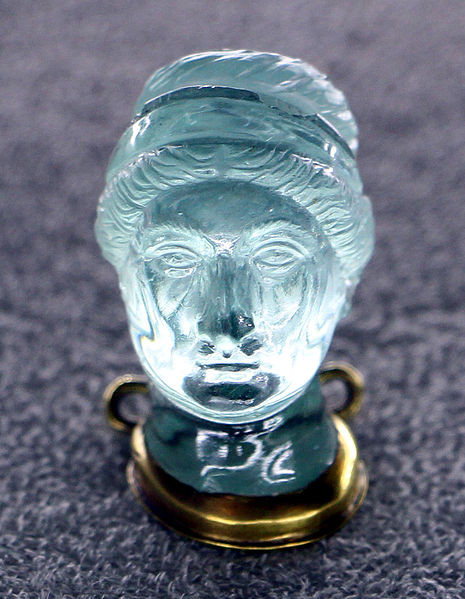 上图:古代艺术,皇后头像,以海蓝宝石雕刻,可能是玛蒂迪亚皇后,底部以黄金修复;年代可追溯至公元2世纪(描述译自意大利语)| 图片来源:Sailko, CC-BY-SA-3.0
上图:古代艺术,皇后头像,以海蓝宝石雕刻,可能是玛蒂迪亚皇后,底部以黄金修复;年代可追溯至公元2世纪(描述译自意大利语)| 图片来源:Sailko, CC-BY-SA-3.0
三月诞生石的历史和文化背景
这两种三月诞生石的一个共同点是其丰富、广阔的历史,充满了传说和传说!
海蓝宝石的历史用途
海蓝宝石的名称源于拉丁语“ aqua ”(意为“水”)和“ marine ”(意为“海”),因其形似海水。虽然这个名称出现于1609年,但其原名“海绿色绿柱石”却已为人所知数百年。
古人相信,三月诞生石能为海上航行带来庇护,因此常将其雕刻成护身符。关于海蓝宝石的起源,传说不一,有美人鱼遗失的宝藏,也有海神波塞冬(或称尼普顿)创造的传说。
许多古人将海蓝宝石与青春的喜悦和年轻爱情的激情联系在一起。
在中世纪,人们相信海蓝宝石可以防止中毒(因此在皇室中很受欢迎)并具有通灵能力。
基督徒将海蓝宝石与水手的守护神圣托马斯联系在一起。有些人还认为这种宝石能保佑婚姻幸福。
佛教徒也认为海蓝宝石象征着爱情。印度的传统之一是赠送新婚夫妇海蓝宝石首饰。
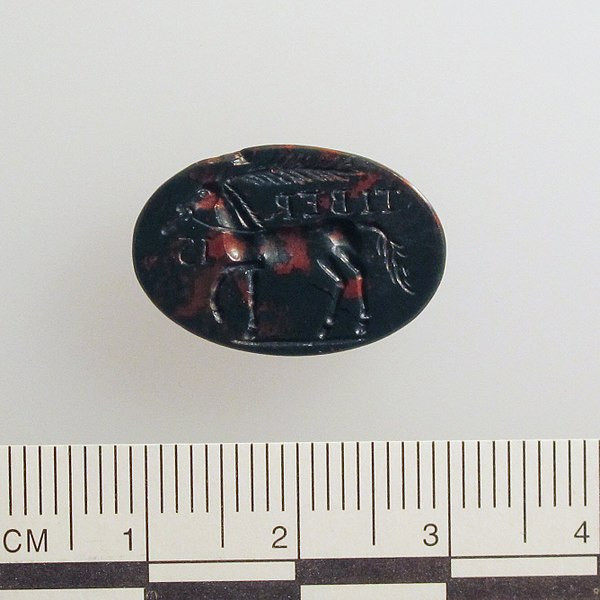 上图:罗马帝国鸡冠蛇足神像(鸡头蛇足神像)的鸡冠蛇足石雕,可追溯至公元 3 世纪,现藏于大都会艺术博物馆| 图片来源:大都会博物馆,公共领域
上图:罗马帝国鸡冠蛇足神像(鸡头蛇足神像)的鸡冠蛇足石雕,可追溯至公元 3 世纪,现藏于大都会艺术博物馆| 图片来源:大都会博物馆,公共领域
历史和神秘背景下的血石
“血石”这个名字源于其典型的血红色、水滴状图案。
然而,古希腊名称是“ heliotrope ”,源自helios (意为“太阳”)和trepo (意为“转动”)这两个词,因为这种石头在夕阳下或放置在水下阳光直射下时看起来完全是红色的。
古人将血石用于实用和神秘目的。
巴比伦人制作了血石印章,贵族佩戴血石印章戒指来盖章重要文件。美索不达米亚人和巴比伦人也使用血石进行占卜,而埃及人、罗马人和希腊人则相信三月诞生石能使他们在战斗或运动中更加强大。
古罗马学者老普林尼曾写道,血石是太阳的镜子,可以让人看到日食。另一位古罗马作家达米格隆写道,血石可以预示未来,“如果把血石放在盛满水的银盆里,背对着太阳,它就会转向太阳,使天空变得血红而浑浊。”
被释放的奴隶经常佩戴刻有太阳或火炬的血石来象征他们的解放。
一个常见的昵称是“烈士石”,最终导致了“血石”这个名字。
基督教传说中,血石起源于耶稣基督被钉十字架的事件。传说基督的血滴落在十字架下的绿色泥土或碧玉上(说法不一),形成了这块石头。因此,一些人相信血石可以治愈与血液循环相关的疾病。
到了中世纪,殉道者的联系仍然存在,人们用血石雕塑描绘殉道行为,用护身符代表基督的牺牲。
中世纪的欧洲人用血石制作药剂来治疗出血、肿瘤和蛇咬伤。在印度,血石粉被用作壮阳药。
如今,印度是血石的主要产地之一,这让我们了解了三月水晶的起源!
 上图:海蓝宝石原石
上图:海蓝宝石原石
三月诞生石的地质起源和特性
海蓝宝石是绿柱石的一种。绿柱石非常坚固, 莫氏硬度为7.5至8。这类矿物通常形成于含绿柱石的花岗岩伟晶岩中。
杂质的存在导致了海蓝宝石颜色的多样性,例如海蓝宝石的蓝绿色调背后就隐藏着亚铁或三价铁。同时,平行或垂直排列的空心管状内含物也可能产生轻微的猫睛光(“猫眼”效果)或星光(“星光”效果)。一些品质上乘的海蓝宝石产自西伯利亚和巴西。
血石是玉髓(又称微晶石英)的一种。有些人将血石归类为碧玉,而碧玉是玉髓的一个子类别,指的是不透明、有图案的宝石。
这种三月诞生石的形成与其他石英石相似,但其红色斑点来自赤铁矿内含物。大多数宝石级血石产自印度。
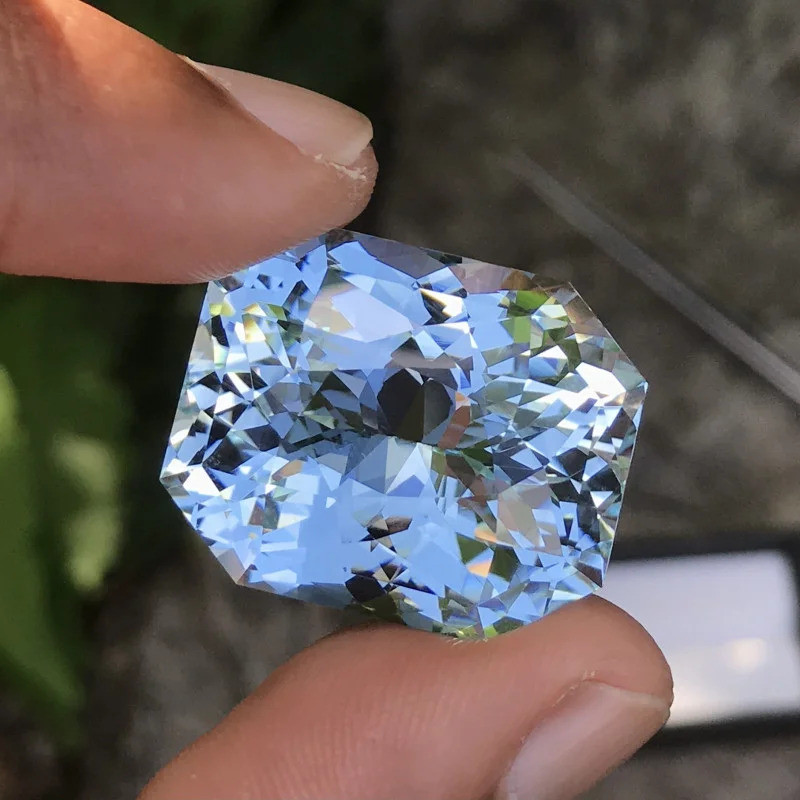 上图:多面圣玛利亚蓝海蓝宝石
上图:多面圣玛利亚蓝海蓝宝石
蓝色和绿色的色调:海蓝宝石的精致调色板
尽管海蓝宝石的颜色范围从蓝色到绿色,却出奇地丰富。价值越高的宝石,蓝色就越纯净、饱和度也越高,但通常情况下,这些三月诞生石的颜色是淡淡的绿蓝色。
某些颜色有不同的商品名称:
圣玛丽亚:中深色、高饱和度蓝色;发现于巴西圣玛丽亚德伊塔比拉矿
圣埃斯皮里图:蓝色饱和度比圣玛丽亚低,但具有独特的光彩和深色
Maxixe :深蓝色;在巴西 Maxixe 矿中很少天然发现;通常通过不稳定的辐照处理产生(容易褪色)
楠普拉:知更鸟蛋蓝;发现于莫桑比克楠普拉省
Pedra Azul :冰蓝色;发现于巴西的Pedra Azul区
由于纯蓝色更有价值,许多海蓝宝石都经过热处理以去除绿色底色。
那么,血石是什么样子的呢?
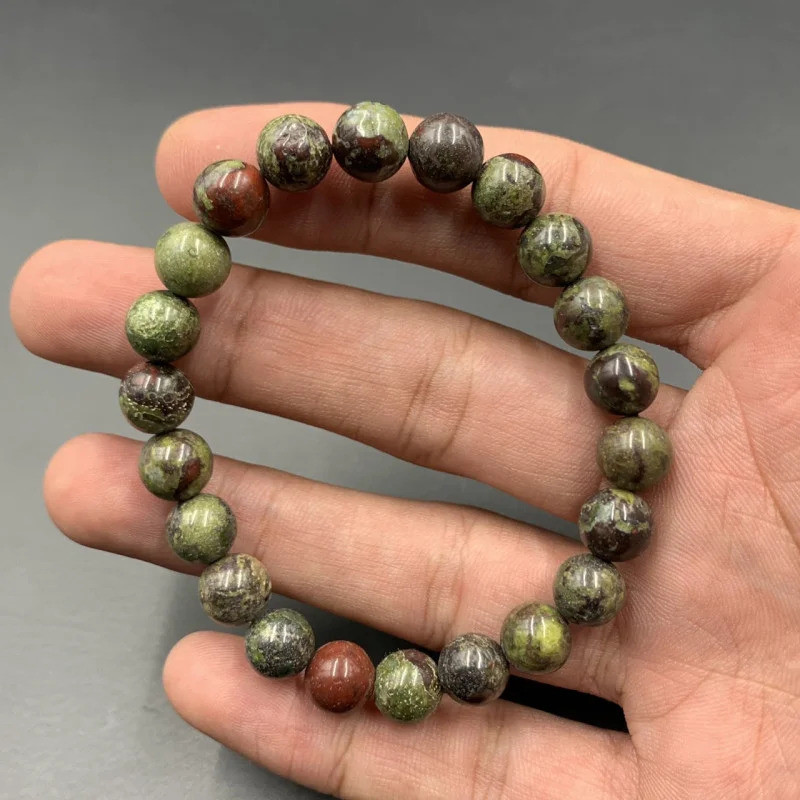
血石的神秘之处:深绿色和红色斑点
从技术上讲,血石被认为是一种血浆,是一种半透明到不透明的绿色玉髓,带有黄色、白色或红色斑点。
血石诞生石的经典外观是带有红色斑点的森林绿色。血石上的斑点,有时还有条纹,也可能是橙色、棕色、白色、黄色,或这些土色的组合。
除了红色赤铁矿内含物外,血石颜色背后的其他矿物内含物还包括角闪石、绿泥石和辉石。
有些人将“天芥菜”血石归类为半透明且带有红色斑点的血石,而将“血浆”血石归类为不透明且带有极少红色斑点的血石。
一些带有商品名的变体:
血碧玉:带有白色纹理的红黑色斑点
彩色碧玉:主要颜色除绿色和红色外,或多种颜色组合
除了外观之外,海蓝宝石和血石的另一个区别在于它们的精神含义和作为治疗石的用途。
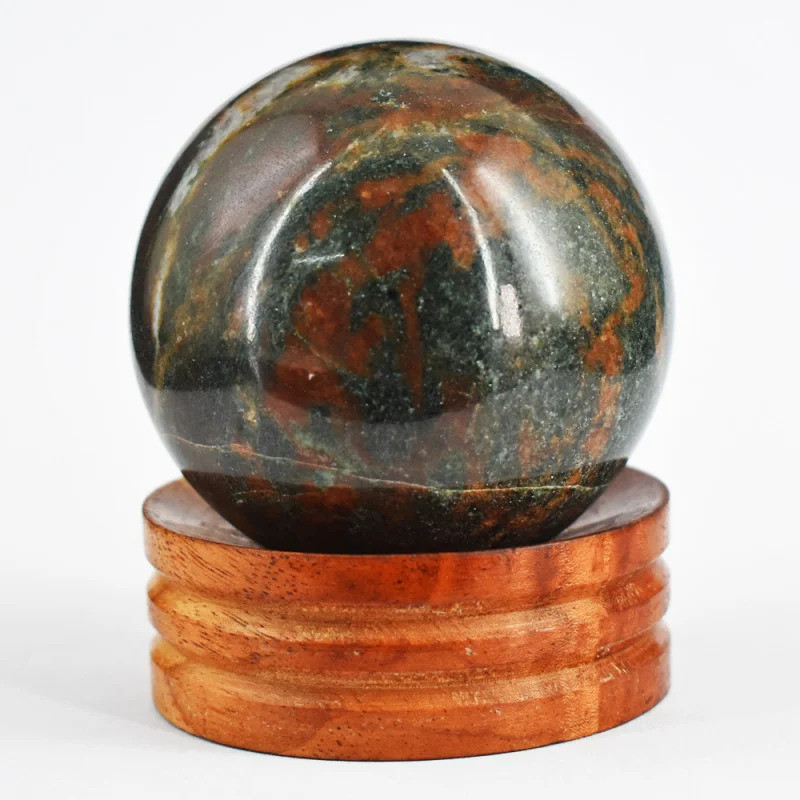 上图:血石疗愈球
上图:血石疗愈球
精神与形而上学意义
海蓝宝石的诞生石象征着净化、宁静和青春。而血石则象征着力量、忍耐和牺牲。
在能量治疗中,海蓝宝石是喉轮的脉轮石,而血石则打开根(基础)脉轮。
然而,三月诞生石的一些含义是重叠的:
勇气:据说这两种宝石都能增强勇气,海蓝宝石注重增强自我力量,勇敢地说出真相,而血石则注重增强体力,追求梦想。
清洁:每块石头都具有清洁和净化的特性,可以消除消极情绪,帮助您重新开始。
克服障碍:海蓝宝石被认为能够帮助你克服情感障碍,例如人际关系中的沟通障碍。血石据说具有保护作用,能够帮助你克服通往成功的障碍。
从占星学角度来看,海蓝宝石与双鱼座(2月19日至3月20日出生)敏感的水能量完美契合。而血石则体现了火热、雄心勃勃的白羊座(3月21日至4月19日出生),其守护星是火星。
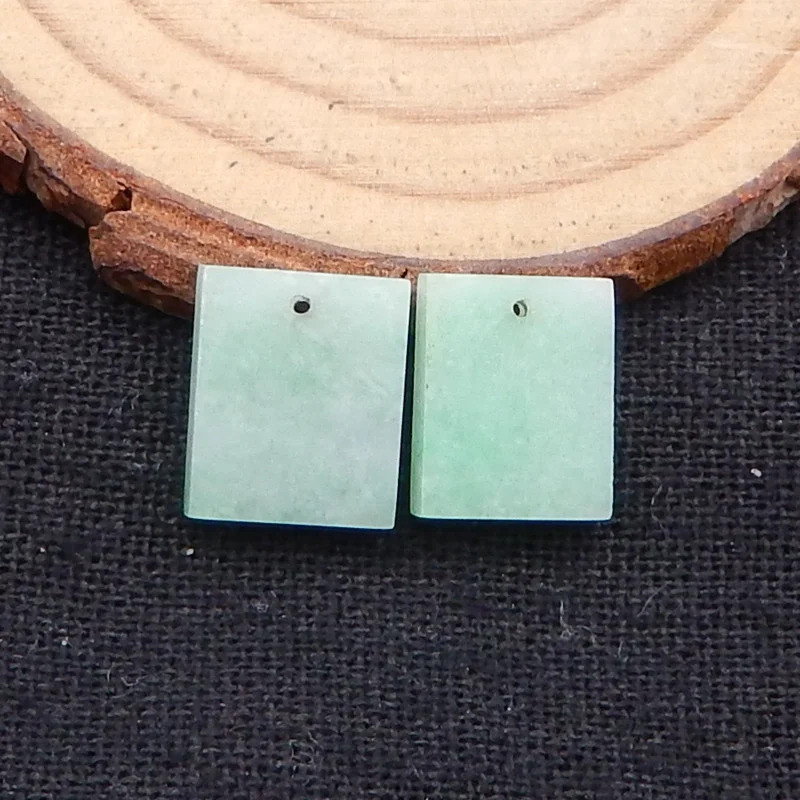 上图:雕花玉耳环
上图:雕花玉耳环
探索三月诞生石的替代品
海蓝宝石和血石不合你的心意?还有其他选择!
神秘的三月诞生石是玉,源于古老的西藏占星术,它融合了春天的甜蜜和火星的持久。
第二种三月诞生石是碧玉——与血石相似,但种类更多。
另一种绿色选择是祖母绿,它是春天的诞生石。祖母绿是海蓝宝石的姊妹石,颜色更深,也象征着新生。
从价格上看,血石更容易获得,而海蓝宝石对于某些人来说则价格昂贵。
一些更实惠的海蓝宝石诞生石替代品:
您还可以选择合成海蓝宝石,它是在实验室中制造的,但具有与天然海蓝宝石相同的化学和物理特性。
 上图:2006 年 3 月 7 日,英国女王伊丽莎白二世出席巴西国宴时佩戴海蓝宝石王冠(详见下文)| 图片来源:Agência Brasil, CC-BY-SA-3.0 |原始文件
上图:2006 年 3 月 7 日,英国女王伊丽莎白二世出席巴西国宴时佩戴海蓝宝石王冠(详见下文)| 图片来源:Agência Brasil, CC-BY-SA-3.0 |原始文件
当代及著名珠宝设计
海蓝宝石和血石都出现在现代许多独特的珠宝设计中。
蓝晶
作为三月诞生石或仅仅是一件华丽的配饰,多面海蓝宝石色彩柔和,但光芒四射。
海蓝宝石诞生石戒指(或订婚戒指)非常受欢迎,通常镶嵌在白色或浅色的点缀石(如白钻石)旁边。
一些著名的海蓝宝石珠宝包括:
伊丽莎白女王的海蓝宝石王冠:受英国女王伊丽莎白二世的委托,Garrard 于 1957 年打造了这顶铂金王冠,上面镶有巴西海蓝宝石和钻石。这顶王冠是巴西总统热图利奥·巴尔加斯于 1953 年赠送给她的。圣保罗州长于 1971 年捐赠了一颗更大的海蓝宝石来代替中心石。
Hirsch 海蓝宝石吊坠:这颗重达 109.92 克拉的祖母绿切割海蓝宝石镶嵌在白金吊坠上,吊坠上还镶嵌了 118 颗微型密镶钻石。这颗海蓝宝石曾为法国皇帝路易十五所有,据说他曾利用过海蓝宝石的镇静功效。
梅根·马克尔的订婚戒指:这枚黄金戒指镶嵌着一颗13克拉的祖母绿切割浅蓝色海蓝宝石,周围点缀着几颗小钻石。这枚戒指由Asprey打造,由露西亚·弗莱查·德·利马于1996年左右赠予戴安娜王妃。戴安娜王妃的儿子哈里王子将这枚戒指赠予梅根·马克尔,后者在2018年的婚礼上佩戴了这枚戒指。
鸡血石
与海蓝宝石不同,血石是一种富有质感、朴实而有重量的宝石,其颜色反映了这些特征。
三月诞生石通常被切割成凸圆形或雕刻品,因此许多血石首饰都是吊坠或串珠手链。然而,带有古老风格的雕刻或凸圆形血石戒指正日益流行,尤其是在华丽的金质镶嵌下。
血石在皇室珠宝中并不常见,但有一种皇室血石(可以说是最著名的血石)是神圣罗马帝国皇帝鲁道夫二世(1552年至1612年在位)的印章。这块印章现藏于巴黎卢浮宫博物馆,皇帝的印章就雕刻在这块血石上。
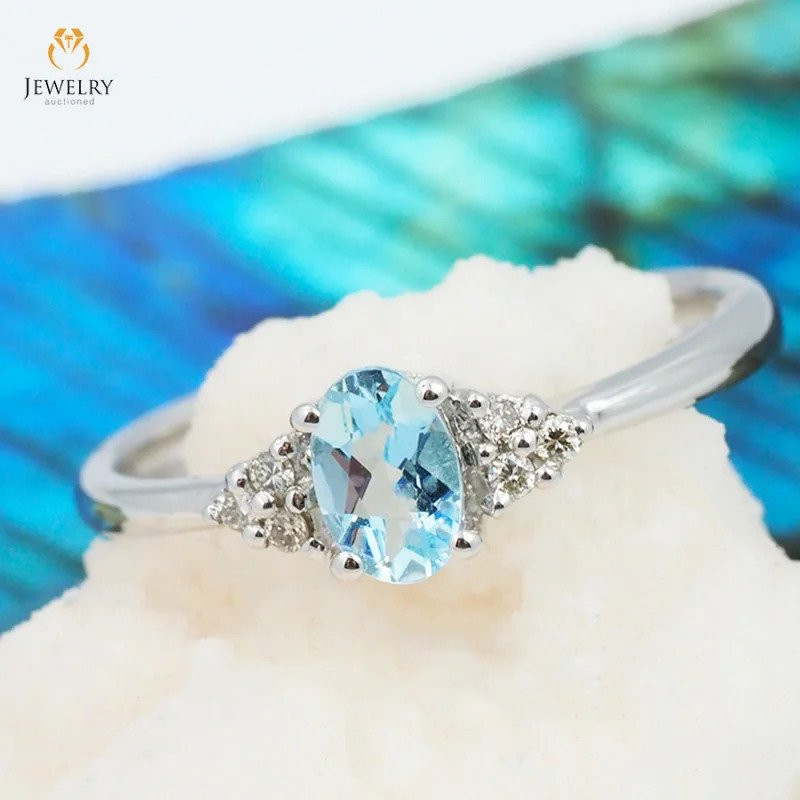
哪种三月诞生石适合您?
您是否被柔和飘逸的海蓝宝石,或浓郁朴实的血石所吸引?这两种三月诞生石都蕴含着勇气和治愈的力量,同时又与三月的象征意义相契合,象征着新的开始。无论如何,三月诞生石首饰中的这两种宝石都拥有永恒的魅力!
搜索Gemstone Encyclopedia
相关文章
最新的文章
棕榈象牙雕刻,又称植物象牙,是象牙的天然替代品,取自南美洲棕榈树(Phytelephas palm)的果实,并以符合伦理的方式采集。本指南将带您全面了解棕榈象牙!
15th Jan 2026
彩虹格纹日光石是一种长石,由于内部含有各种包裹体,呈现出三种绚丽的光学效应。它绚丽多彩的光泽和格纹图案使其成为收藏家梦寐以求的珍宝!
12th Jan 2026
文章分类
How To's is where you will find helpful articles from gem Rock Auctions on how to cut gemstones, select gemstones and buy gemstones.
9文章数
